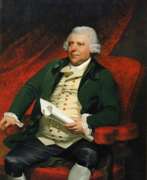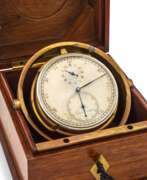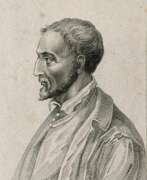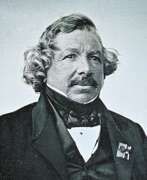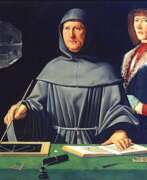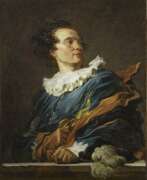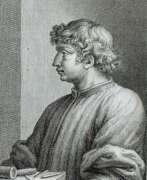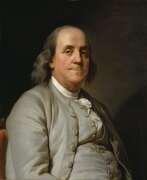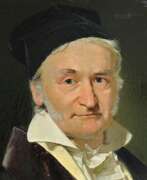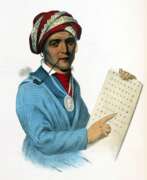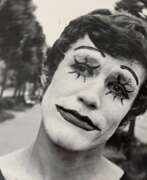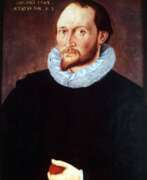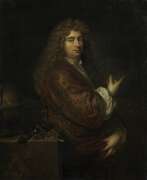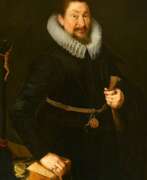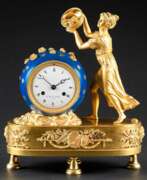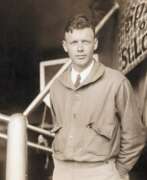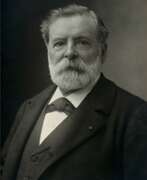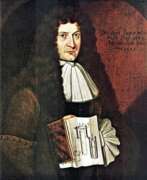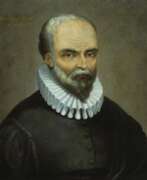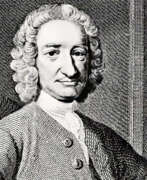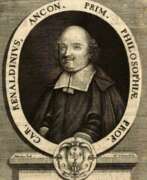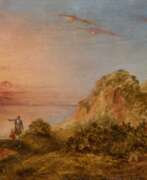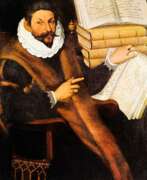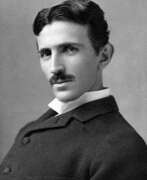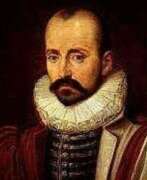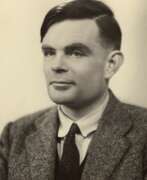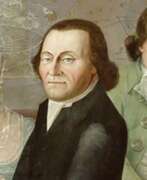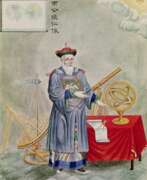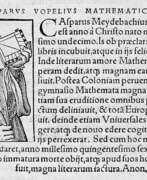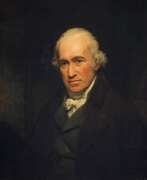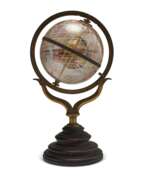Inventors
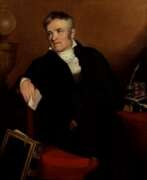

Rudolph Ackermann the Elder was a German and British inventor and publisher, founder of Ackermann & Co.
He was the son of a master saddler, learned the craft and in time achieved a high art in carriage making, designing carriages and coaches. In 1794 Ackermann opened a printing and picture store in London, which quickly became popular. The following year he opened a printing shop at 96 Strand - thus began the printing business of the Ackermann dynasty, which lasted for over two hundred years.
Between 1808 and 1810. Ackermann published the first of his sumptuous plate books, The Microcosm of London, with beautiful hand-colored aquatints. This work established his reputation as a book publisher, and he subsequently published many more elaborate illustrated books. Ackermann also gained widespread fame for the periodical he founded in 1809, the Repository of Art, Literature, Commerce, Manufactures, Fashion, and Politics. This popular journal, published monthly until 1828, contained articles and illustrations of various kinds, especially on fashion, social and literary news.
Ackermann's business flourished, and by the end of 1820 he had established offices in Central and South America. Continuators of the Ackermann dynasty were in the printing business until the end of the twentieth centur
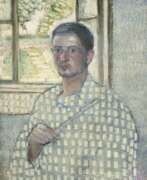

Vladimir Davidovich Baranov-Rossine (Russian: Владимир Давидович Баранов-Россине) was a master of the Russian avant-garde, a prolific painter, sculptor, and inventor, whose work significantly contributed to the Cubo-Futurism movement. Born on January 1, 1888, in Kherson, he was originally named Shulim Wolf Leib Baranov but is best known by his pseudonym, Daniel Rossine. His early artistic education took place in Odessa and then at the St. Petersburg Academy of Arts, laying the groundwork for his future as a revolutionary artist.
In 1910, Baranov-Rossine moved to Paris, a pivotal move that introduced him to the burgeoning European avant-garde scene. It was there, alongside other notable artists such as Marc Chagall, Osip Zadkine, Alexander Archipenko, and Chaim Soutine, that he became an inhabitant of the famous Parisian house "La Ruche." His innovative work, particularly the invention of the Optophonic Piano, which projected colors in sync with music, underscored his commitment to blending art and technology, a hallmark of his career.
Tragically, Baranov-Rossine's life was cut short when he was arrested by the Gestapo in 1943 and subsequently died in Auschwitz in 1944. Despite his untimely death, his legacy lives on through his contributions to modern art and technology. His works can be found in various museums and galleries, celebrated for their vibrant expression and avant-garde techniques that continue to inspire artists and collectors alike.
For those intrigued by Vladimir Davidovich Baranov-Rossine's pioneering work and its lasting impact on the art world, signing up for updates on new product sales and auction events related to this avant-garde master is highly recommended. This ensures enthusiasts and collectors are always informed about the latest opportunities to engage with Baranov-Rossine's remarkable legacy.
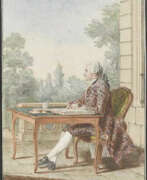

Louis Carrogis, better known as Carmontelle was a French artist, garden designer, architect, playwright and inventor.
Carmontelle was of simple origins but versatilely gifted. He wrote several plays and three novels, and created portraits of historical figures. He became famous for his painting of little Mozart at the clavier. In the service of Louis-Philippe I, Duke of Orléans, he was responsible for the theatrical performances for the family as stage designer and stage director.
Carmontelle is the planner and designer of one of the earliest examples of a French landscape garden in Paris, now known as Parc Monceau. In designing the garden, Carmontel rejected many of the fashionable trends in landscape design at the time, drawing inspiration from Japanese pleasure gardens and insisting on incorporating illusion and fantasy.
Carmontelle is also credited as the inventor of animated images. Translucent tape with landscapes depicted on it was slowly rolled from one roll to another against a backdrop of daylight, thus creating the illusion of walking through a garden.
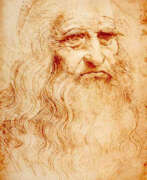

Leonardo da Vinci was an Italian polymath of the High Renaissance, celebrated as a painter, draughtsman, engineer, scientist, theorist, sculptor, and architect. His remarkable abilities and innovative thinking made him an epitome of the Renaissance humanist ideal. Born in Vinci, near Florence, in 1452, Leonardo was educated in Florence by Andrea del Verrocchio, a renowned painter and sculptor. He began his career in Florence, later working in Milan, Rome, and France, where he died in 1519.
Da Vinci is revered for his artistic mastery, technological innovation, and scientific inquiry. Despite having fewer than 25 major works attributed to him, including several unfinished ones, his influence on Western art is profound. His magnum opus, the "Mona Lisa," housed in the Louvre Museum, Paris, is considered the world's most famous painting. "The Last Supper," his most reproduced religious painting, showcases his mastery of dramatic narrative and pictorial illusionism. Both paintings exhibit Leonardo's unique ability to convey complex human emotions and his innovative use of techniques like sfumato and chiaroscuro.
Leonardo's interests extended far beyond fine art. He was a visionary in multiple fields, including anatomy, physics, architecture, and mechanics. His notebooks reveal designs for machines like bicycles, helicopters, and military tanks, centuries ahead of their time. However, due to his diverse interests, he left many projects and paintings incomplete. Leonardo's final years were spent in France, where he continued his artistic and scientific pursuits until his death.
For collectors and experts in art and antiques, Leonardo da Vinci remains a figure of endless fascination. His works not only embody the pinnacle of Renaissance art but also provide insights into the era's scientific and philosophical inquiry. To stay updated on new sales and auction events related to Leonardo da Vinci, sign up for our newsletter. This subscription is a gateway to exploring the rich legacy of this unparalleled artist and inventor.
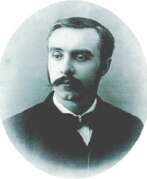

Sherman Foote Denton was an American naturalist, inventor, illustrator, and writer.
Denton was one of the best later natural history artists. He served as an artist for the Smithsonian Institution's U.S. Fish Commission and was commissioned by the Smithsonian Institution to create the book Game Fish of New York. And the annual reports of the Fish and Game of New York State for 1895-1909 featured 99 species of freshwater and marine fish, as well as a number of other items, including lobsters, oysters, ring-necked pheasant, and Virginian deer. These have been published in both book and folio form. Denton also developed a method of mounting fish that preserved their lifetime color.
Along with his brothers Shelley Wright and Robert Winsford, Denton founded the Denton Brothers Butterflies Company, which sold butterfly specimens. Sherman invented and patented in 1901 the mounting of scale specimens on a white plaster tablet under glass instead of the traditional mounting.
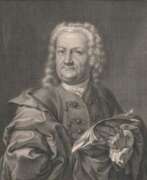

Martin Engelbrecht was a German Baroque painter and engraver, publisher, and inventor of the first miniature dioramas.
Martin and his brother Christian were skilled printers and engravers in Augsburg, Germany in the 18th century. Martin's works include illustrations for Ovid's Metamorphoses, The War of the Spanish Succession, P. Dekker's Les Architectes Princiers, 92 views of Venice, and the Assemblage Nouveau Des Manouvries Habilles, a series of engravings depicting laborers and their clothing, published in Augsburg around 1730.
Also around 1730. Martin Engelbrecht created maps for miniature theaters, which, inserted into a display box, showed religious scenes and pictures of everyday life in three-dimensional perspective. He devoted an entire series to Italian theater. These miniature theaters or Engelbrecht dioramas are considered the earliest paper theaters in history, and they became very popular in the 18th century as a means of home entertainment. Engelbrecht is known to have created at least forty-one sets of miniature theater dioramas.
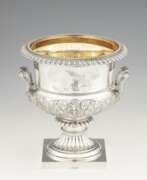

Johann George Hossauer was a German jewelry artist, entrepreneur and inventor.
Hossauer began working at the bronze factory of Werner & Mietke in Berlin and trained under the jeweler Henri de Ruolz. In 1819, King Friedrich Wilhelm III of Prussia financially supported the factory, which was managed by Hossauer. This factory produced articles of platinum, gold, silver, bronze, gilded and silvered copper and employed up to 100 people. At one of the first trade exhibitions in Berlin, the master received a gold medal for his work, and in 1826 the king granted him the title of jeweler of His Majesty the King.
As a prominent Berlin jeweler, Hossauer executed several orders of the Prussian court, including the Pour Le Merite and the Order of St. John, and also participated in the creation of the Russian Order of St. Vladimir and the Hanoverian House Order of St. George. He created silver table sets for Prussian princes and fulfilled other prestigious orders, produced jewelry, medals, and numerous pieces of gold and silverware.
In 1845, Hossauer sold his patent for the electroplating process to Werner von Siemens, and ten years later he was appointed a judge at the World's Fair in Paris.
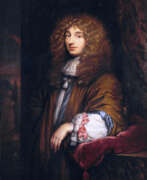

Christiaan Huygens van Zeelhem was a Dutch mechanic, physicist, mathematician, inventor and astronomer who formulated the wave theory of light.
An admirer of Descartes, Huygens preferred to conduct new experiments himself to observe and formulate laws. In physics, he contributed to the development of the crucial Huygens-Fresnel principle, which applies to wave propagation. He also extensively investigated free fall. He experimentally proved the law of conservation of momentum. He derived the law of centrifugal force for uniform circular motion.
He also invented the pendulum clock, discovered centrifugal force and the true shape of Saturn's rings as well as its moon Titan. Huygens is considered the first theoretical physicist to use formulas in physics and one of the founders of theoretical mechanics and probability theory.


Steve Jobs, full name Steven Paul Jobs, birth name Abdul Latif Jandali, is an American entrepreneur, inventor and industrial designer who pioneered the information technology era.
Jobs grew up in foster care, took a job at Atari Corporation as a video game designer in early 1974, then traveled to India, comprehending Zen Buddhism. At the same time, Jobs met former classmate Steven Wozniak (b. 1950), and together they developed one of the first personal computers and in 1976 founded Apple, which was the beginning of the personal computer revolution of the 1970s and 1980s.
In 1985, Jobs left Apple and founded NeXT, a company that developed a computer platform for universities and businesses. By 1997, Jobs had regained control of Apple by leading the corporation. Under his leadership, the company was saved from bankruptcy and began turning a profit a year later. Over the next decade, Jobs oversaw the development of the iMac, iTunes, iPod, iPhone, and iPad, as well as the development of the Apple Store, iTunes Store, App Store, and iBookstore. In 2011, Apple was recognized as the world's most valuable publicly traded company.
Steve Jobs passed away after a long illness at the age of 56. In July 2022, Jobs was posthumously awarded the Presidential Medal of Freedom, the highest U.S. civilian honor, for his invaluable contributions to the music, film, and computer industries.
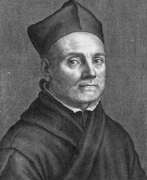

Athanasius Kircher was a German scholar, inventor, professor of mathematics and oriental studies, and a friar of the Jesuit order.
Kircher knew Greek and Hebrew, did scientific and humanities research in Germany, and was ordained in Mainz in 1628. During the Thirty Years' War he was forced to flee to Rome, where he remained for most of his life, serving as a kind of intellectual and information center for cultural and scientific information drawn not only from European sources but also from an extensive network of Jesuit missionaries. He was particularly interested in ancient Egypt and attempted to decipher hieroglyphics and other riddles. Kircher also compiled A Description of the Chinese Empire (1667), which was long one of the most influential books that shaped the European view of China.
A renowned polymath, Kircher conducted scholarly research in a variety of disciplines, including geography, astronomy, mathematics, languages, medicine, and music. He wrote some 44 books, and more than 2,000 of his manuscripts and letters have survived. He also assembled one of the first natural history collections.
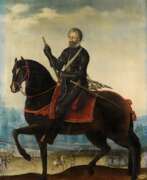

Marin le Bourgeoys was a distinguished French artist and inventor, renowned for his creation of the flintlock mechanism that revolutionized firearms for over two centuries. Born into an esteemed artisan family in Lisieux, Normandy, le Bourgeoys was initially trained as a painter, later gaining acclaim as a gunsmith, inventor, and luthier.
His talents soon caught the eye of royalty; in 1598, King Henry IV appointed him "Valet de Chambre" at the Royal Court, a testament to his esteemed position in the realms of art and innovation. Le Bourgeoys' ingenuity extended beyond the court; his flintlock mechanism, invented in the early seventeenth century, was a pivotal development in firearm technology. This mechanism featured a striking device that, when the trigger was pulled, would hit a firing pin to ignite the primer in the gun cartridge, a design so advanced that it remained in use for over two centuries.
As an artist, le Bourgeoys' work was not limited to the functional; he was also a creator of luxury items, a clock-maker, and embodied the spirit of an educated Renaissance humanist thriving in cultivated circles. His legacy in the art world is marked by works such as the portrait of Henri IV, which was recently acquired by the Musée de l'Armée, signifying the lasting appreciation of his artistic prowess.
For collectors, auctioneers, and experts in art and antiques, Marin le Bourgeoys' contributions to both art and firearm technology present a rich tapestry of historical and cultural significance. To stay informed on updates and discoveries related to Marin le Bourgeoys, sign up for our exclusive newsletter.
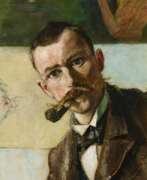

Carl August Liner was a Swiss painter, graphic artist, designer and inventor. He is sometimes referred to as Senior to distinguish him from his son, Carl Walter Liner, who was also a well known painter.
In addition to his paintings, he designed postage stamps and posters and did illustrations. It was this work that provided most of his income. He was also an amateur inventor and holds the patent for an early version of the single-axis mower.
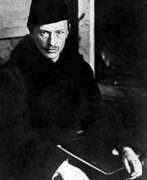

Petr Miturich (Russian: Пётр Васильевич Митурич), a Russian graphic artist and painter born in 1887 in St. Petersburg and passing away in 1956 in Moscow, was a pivotal figure in the art world of his time. His education at the Kiev art school between 1906-1909, followed by studies at the Academy of Arts in St. Petersburg under N. S. Samokish until 1915, laid a solid foundation for his career. Miturich joined the World of Art group in 1915 and was a member of the Four Arts association from 1925 to 1929, marking his active involvement in the artistic community. His teaching role at the Moscow Vkhutemas/Vkhutein between 1923 and 1930 further demonstrates his commitment to art education.
Miturich's work is celebrated for its rhythmical composition and expressive strokes, often featuring landscapes and portraits that reveal a deep engagement with both the external and internal worlds of his subjects. His innovative approach to drawing and painting, particularly evident in his portraits and cycles of landscapes, underscores his quest for a new artistic language that balanced innovation with traditional foundations.
Significantly, Miturich's contributions extend beyond his artistic creations. He was deeply interested in aeronautics, as showcased in his letun project, a testament to his engagement with the themes of flight and motion. This interest aligns him with the broader currents of Russian Modernism and connects his work with other avant-garde movements of the time.
Miturich's legacy is preserved in major institutions like the State Tretyakov Gallery, the State Russian Museum, and the Museum of Velimir Khlebnikov in Astrakhan, among others, ensuring his influential works continue to inspire art enthusiasts and collectors.
For collectors and experts in art and antiques, Petr Miturich's oeuvre offers a fascinating glimpse into the intersection of traditional art forms with avant-garde ideas. His works, rich in expressive detail and historical significance, represent a compelling addition to any collection.
To stay updated on new product sales and auction events related to Petr Miturich, sign up for updates. This subscription will keep you informed about the latest opportunities to acquire works by this remarkable artist.
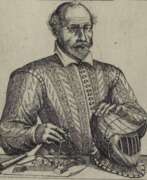

Agostino Ramelli was an Italian military engineer and mechanic who worked in the fields of fortification and practical mechanics.
Ramelli studied mathematics, mechanics, and engineering under Giacomo di Marignano, who is considered a disciple of Leonardo da Vinci. He first showed his talents as a mechanic during Louis XIII's military campaign by constructing a mine under a bastion.
Ramelli invented many mechanisms that impressed his contemporaries, including their special aesthetic appeal. His most popular creation is the so-called Ramelli Book Wheel, a rotating reading table. Agostino Ramelli positioned his invention as a sleek design that allowed access to several books without having to get up from his seat.
Ramelli wrote and illustrated a book of engineering projects, Le various et artificiose machine ("Various and Artificial Machines"). The book contains 195 designs, over 100 of which are water-lifting machines, such as water pumps or wells, as well as bridges, mills, and so on. This very interesting book for our contemporaries is still published and is still in demand.
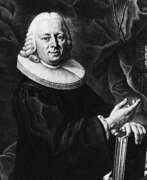

Jacob Christian Schäffer was a German inventor, naturalist, entomologist and mycologist.
Schäffer was a very versatile scientist. He is best known for his work in mycology (the study of fungi), but his most important publication was undoubtedly a book on daphnia or water fleas.
Schäffer also published reference books on pharmaceuticals and medicinal herbs. He conducted experiments on electricity, colors, and optics, and invented the manufacture of prisms and lenses. He invented the washing machine, designs for which he published in 1767, and studied ways to improve paper production.
Schäffer was a professor at the Universities of Wittenberg and Tübingen, a member of the Royal Society of London, and a correspondent of the French Academy of Sciences.
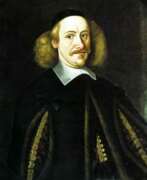

Otto Guericke, from 1666 von Guericke (pronunciation and original spelling: Gericke) was a German politician, jurist, physicist and inventor. He is best known for his experiments on air pressure with the Magdeburg hemispheres. He is considered the founder of vacuum technology.
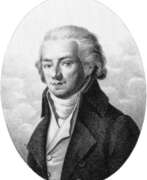

Samuel Thomas von Soemmering was a German physician, anatomist, anthropologist, paleontologist, physiologist and inventor.
He studied medicine at Göttingen, where he received his doctorate, and in the same year became professor of anatomy at Kassel, then at Mainz. Among Soemmering's contributions to biology are the discovery of the macula in the retina of the human eye, studies of the brain, lungs, nervous system, and embryonic malformations, and he published many papers in the fields of neuroanatomy, anthropology, and paleontology. He was the first to give a reasonably accurate account of the structure of the female skeleton.
Soemmering also worked on fossil crocodiles and pterodactyls, which at the time were called ornithocephalians. In addition, Soemmering dabbled in chemistry, astronomy, philosophy, and various other fields of science. Among other things, he investigated the refinement of wines and sunspots, and designed a telescope for astronomical observations. In 1809, Soemmering developed a sophisticated telegraph system based on electrochemical current, which is now preserved in the German Science Museum in Munich.
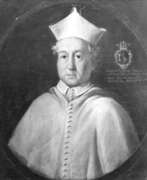

Johann Zahn (German: Johann or Johannes Zahn) was a German scientist and philosopher, optician and astronomer, mathematician and inventor.
Zahn studied mathematics and physics at the University of Würzburg, was professor of mathematics at the University of Würzburg, and served as a canon of the Order of Regular Canon Premonstratensians. His other activities were optics as well as astronomical observations.
In 1686 Johann Zahn invented and designed a portable camera obscura with fixed lenses and an adjustable mirror, which is the prototype of the camera. In his treatise on optics, Oculus Artificialis Teledioptricus (1702), Zahn gives a complete picture of the state of optical science of his time. He begins with basic information about the eye and then moves on to optical instruments. The book is aimed at eighteenth-century microscope and telescope enthusiasts and includes all the necessary details of construction, from lens grinding to drawings.
